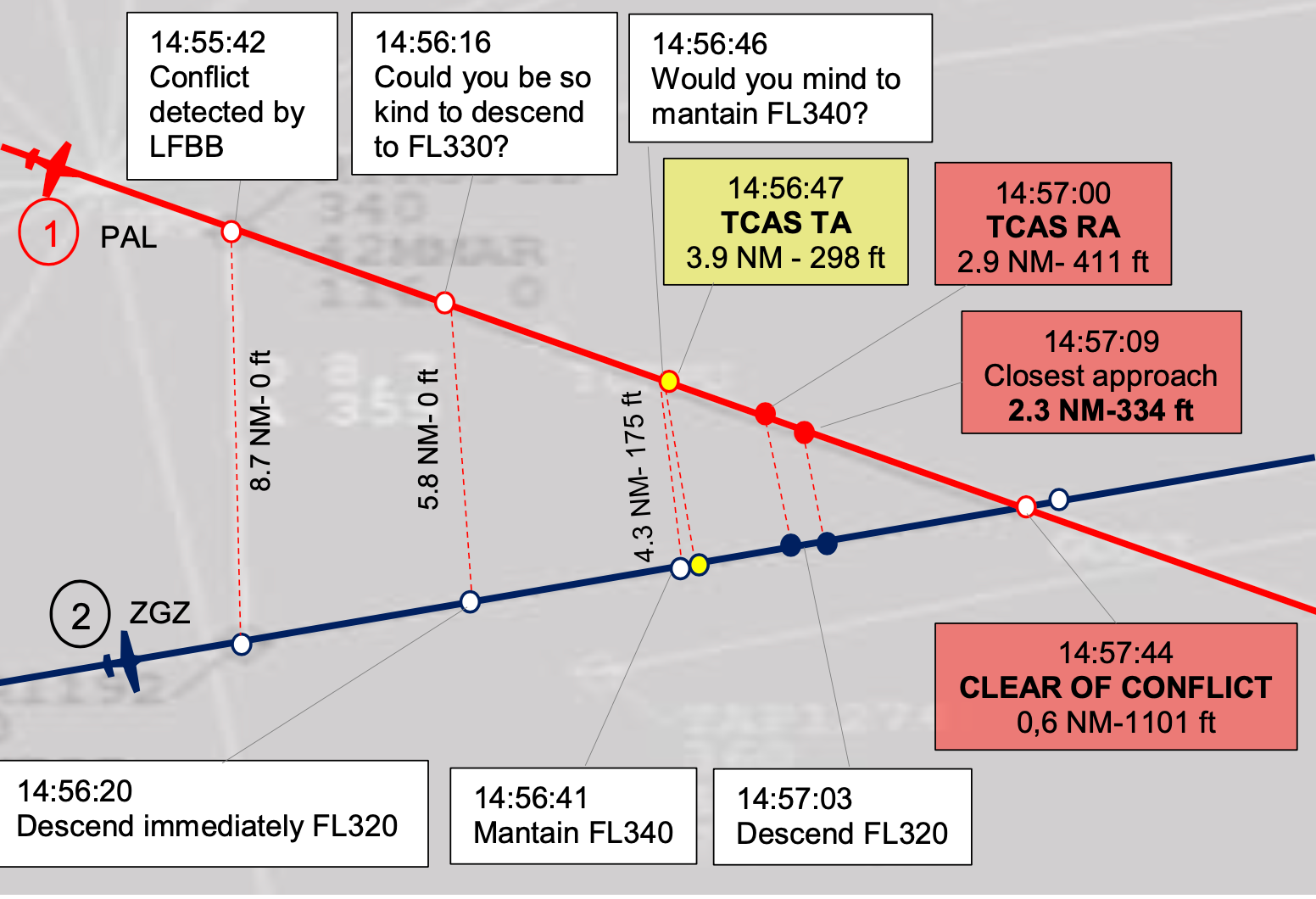Two Ryanair planes in near miss after controllers’ error
Boeing jets carrying a total of 344 passengers and crew were separated by just 332 feet and 2.3 nautical miles

Two Ryanair planes were involved in a near miss over northern Spain because of a series of blunders by air-traffic controllers and a malfunctioning warning system, an investigation has concluded.
No one was hurt and both aircraft landed safely without further incident.
On the afternoon of 2 October 2018, two Boeing 737-800s belonging to the Irish airline took off almost simultaneously from Spanish airports.
The first was from Santiago de Compostela, flying southeast to Palma de Mallorca, with 178 passengers and six crew on board.
The second, from Seville to Toulouse, flew northeast carrying 154 passengers and six crew.
Both aircraft were at a cruising altitude of 34,000 feet as they converged just east of Pamplona. The city gives its name to the PAL sector of the Madrid Area Control Centre.
Although both planes were in this sector, the crew of the second aircraft had been told by a controller to switch to the neighbouring ZGZ (Zaragoza) sector. So the pilots were communicating with air-traffic controllers in different sectors.
The Madrid centre’s short-term conflict alert system was not working because of a software issue.
The danger was first identified by controllers across the border in France, in the Bordeaux Area Control Centre. With the planes on the same altitude and 8.7 nautical miles apart, the French staff notified the controller in the PAL sector of the conflict.
“Judging by his reply, the PAL controller had not detected it,” the report notes. The Civil Aviation Accident and Incident Investigation Commission also says that he was on his first day’s duty after a holiday, “which may have affected his actions, as reflected in the lack of urgency in his communications during the conflict”.
“Immediately after finishing the conversation, the PAL controller called ZGZ to correct the situation. The ZGZ controller also had not identified it.”
The PAL controller said: “Do you want me to lower my RYR to 33 [33,000 feet] just in case?”
The ZGZ controller replied: “Yes, please.”
By the time contact was made with the pilots, the planes were still on the same altitude and 5.8 miles apart.
The PAL controller told his aircraft: “Would you be so kind to descend to level 330 [33,000 feet] for a while? I’m afraid there’s some other traffic at 34 [34,000 feet] by your right”.
But the ZGZ controller also told his aircraft to lose altitude, saying: “Descend immediately level 320.”
The report says: “Both controllers issued the same manoeuvres to the two aircraft for different reasons, aggravating the situation.”
Three simultaneous conversations ensued, the report says: between the two controllers, who informed each other they were descending their aircraft, and the first plane’s crew, requesting confirmation of the descent instruction.
The ZGZ controller said: “I’m descending mine, I’m descending mine”.
His PAL colleague said: “Mine is already descending!”
The first aircraft’s crew asked: “Can you confirm it’s descend FL330?”
Under European Union Aviation Safety Agency rules, the vertical separation should be a minimum of 1,000 feet and 5 nautical miles horizontally.
The report says: “The minimum separation was being violated."
The confusion intensified, with both controllers then telling the pilots to remain at 34,000 feet after all.
The ZGZ controller instructed the second aircraft: “Maintain level 340 please, maintain 340, maintain 340”.
The PAL controller told the first plane: “My apologies, it seems that the other traffic is the one who is descending. Would you mind to maintain 34 for a while?”
The two aircraft “were once again converging”.
Both planes were fitted with a standard traffic collision avoidance system (TCAS), which automatically issues “resolution advisories” to avert danger when a conflict is detected.
These evasion measures take priority over air-traffic control instructions.
The pilots disengaged their autopilot systems. As advised by TCAS, the first plane climbed while the second descended.
At the closest, the separation was just 334 feet vertically and 2.3 nautical miles horizontally, with the first aircraft above the second.
The TCAS intervention ended with a “clear of conflict notification” when the vertical separation had increased to 1,100 feet.
The first plane remained at 34,000 feet while the second descended to 32,000 feet. The ZGZ controller handed over the latter plane to the Bordeaux Area Control Centre, and had to warn them “this was not in accordance with the letter of agreement between the two units”.
The report concludes: “The incident was caused by the failure of the PAL sector controller to identify the conflict, and the subsequent transfer of aircraft 2 to the adjacent sector, ZGZ, without being clear of the conflict.
"Contributing to the incident was the improper handling of the conflict by the controllers in both sectors, who issued similar instructions to the two aircraft, contrary to what had been agreed previously.”
Ryanair’s pilots were cleared of any responsibility: “The actions of the crews are deemed not to have contributed in any way.”
The airline is the safest in the world in terms of passengers flown without a fatal accident.
Join our commenting forum
Join thought-provoking conversations, follow other Independent readers and see their replies
Comments
Bookmark popover
Removed from bookmarks